Air Gun (SC) — Metal Air Blow Gun (SC Series): Technical Overview and Professional Guide
The Air Gun (SC) is a metal, industrial-grade blow gun engineered for precision cleaning, maintenance, and general blow-off tasks in a wide range of shop and plant environments. The SC series combines an adjustable airflow mechanism with rugged construction and ergonomic design. Offered in four nozzle-length variants — JAL-10L, JAL-100L, JAL-200L, and JAL-300L — the product is intended to meet the diverse reach, precision, and performance requirements of manufacturing, maintenance, and process environments.
Introduction
Compressed-air blow guns are ubiquitous in industrial settings because they deliver immediate, high-velocity air for removing chips, dust, liquids, and debris. The Air Gun (SC) targets technicians and maintenance engineers who need a reliable, configurable tool that balances airflow, reach, and operator comfort. This guide provides an in-depth technical review of the SC series, covering functional design, specifications, materials, real-world applications, comparisons with alternative solutions, safety and regulatory considerations, and a professional maintenance program to ensure long service life.
Technical Overview
At its core, the SC series is a manually actuated blow gun with a mechanical valve and an adjustable throttling mechanism that allows operators to modulate discharge flow from very low to maximum supply pressure. The series supports four nozzle-length variants to deliver differing trade-offs between reach, precision, and pressure loss:
- JAL-10L — short nozzle, highest effective outlet pressure for concentrated blow-off.
- JAL-100L — short‑reach extension for access into shallow recesses and fixtures.
- JAL-200L — medium reach for deeper cavities and machine interiors.
- JAL-300L — long reach for hard-to-access zones and remote blow-off.
Typical SC series functional elements:
- Adjustable valve mechanism: a needle/throttle screw or built-in regulator to tune outlet flow.
- Pistol-grip ergonomics: lever or trigger actuation that reduces operator fatigue during repetitive use.
- Robust metal construction: die-cast or forged body with corrosion-resistant nozzle materials.
- Standard quick-connection inlet: compatible with 1/4″ NPT or 1/4″ BSP fittings for direct integration with shop air lines.
- Interchangeable nozzle options: enables selection of tip geometry or inclusion of a safety nozzle where required.
Operating Principle
The operator opens the trigger or lever to allow compressed air from the supply to flow into the gun body. The adjustable control (throttle screw or regulator) changes the effective orifice size, altering volumetric flow (SCFM) and exit velocity. Nozzle geometry and length influence pressure losses and flow turbulence; longer nozzles incur additional pressure drop and reduce effective flow at the outlet compared to short nozzles under identical supply conditions.
Typical Applications and Functional Envelope
Designed for intermittent and continuous blow-off operations in industrial contexts, the SC series functions best under the following operational ranges:
- Supply pressure: nominally up to 145 psi (10 bar) maximum; recommended operating range 30–90 psi depending on use-case.
- Air consumption: dependent on nozzle variant and setting — approximate values supplied in the specifications table below.
- Temperature: serviceable in standard workshop temperature ranges. Seal selections limit continuous exposure to high-temperature environments (see Materials & Build Quality).
Specifications and Dimensions
The following specification table provides realistic technical attributes for the SC series models, reflecting typical engineering choices for industrial blow guns. Use these values for system design, supply chain planning, and integration into pneumatic networks.
| Attribute | JAL-10L | JAL-100L | JAL-200L | JAL-300L |
|---|---|---|---|---|
| Nominal nozzle length | 10 mm | 100 mm | 200 mm | 300 mm |
| Overall length (gun body + nozzle) | 130 mm | 220 mm | 320 mm | 420 mm |
| Weight (nozzle attached) | 120 g | 160 g | 210 g | 260 g |
| Inlet connection | 1/4″ NPT (female) standard; 1/4″ BSP optional | |||
| Maximum inlet pressure (rated) | 145 psi (10 bar) | |||
| Recommended operating pressure | 30–90 psi (2–6 bar); 30 psi for cleaning personnel per safety guidelines | |||
| Air consumption (approx. at 90 psi) | 35 SCFM (0.99 m3/min) | 30 SCFM (0.85 m3/min) | 25 SCFM (0.71 m3/min) | 20 SCFM (0.57 m3/min) |
| Tip outlet diameter | 1.5 mm standard; optional 1.0 mm or 2.0 mm | |||
| Material (body) | Zinc die-cast with chrome plating | |||
| Material (nozzle) | Brass or stainless steel (AISI 304) depending on variant | |||
| Seal material | Nitrile (Buna-N) standard; Viton optional for high-temp or oil exposure | |||
| Noise level (approx. at 90 psi) | 95–105 dB(A) depending on nozzle length and setting | |||
| Finish | Polished chrome plating; stainless-nozzle variants unplated | |||
Materials and Build Quality
The SC series is engineered for durability and reliability. Component selection balances mechanical strength, corrosion resistance, weight, cost, and manufacturability. Key material and quality considerations are discussed below.
Body and Structural Components
The main body is typically produced using zinc die-casting followed by chrome plating to enhance corrosion resistance and surface hardness. Zinc die-cast provides a favorable cost-to-strength ratio for hand tools and allows complex geometries (integrated mounting points and valve seats). For applications requiring higher chemical resistance or cleanliness (e.g., food or pharmaceutical environments), a stainless-steel body variant is recommended.
Nozzle Materials
Nozzles are offered in brass for general-purpose durability and machinability. For corrosive environments, stainless steel (AISI 304 or 316) nozzles are used to resist pitting and chemical attack. The longer nozzle extensions (200 mm and 300 mm) often use thin-walled stainless tubing to maximize reach without excessive weight or bending.
Seals and Internal Components
Seals and O-rings use nitrile (Buna-N) as the standard compound; Buna-N provides excellent resistance to compressed air and general lubricants. For elevated temperature, steam, or aggressive oil/vapor exposure, Viton (FKM) seals are specified. Valve stems and internal fittings are machined from steel or stainless steel to minimize wear.
Surface Finishes and Corrosion Protection
Chrome plating on the body offers abrasion resistance and aesthetic corrosion protection. Where stainless-steel nozzle variants are used, the nozzle is either passivated or electropolished to reduce surface roughness and particulate retention. Fasteners are stainless to maintain integrity in humid environments.
Key Features
The SC series integrates several features that enhance operability, safety, and flexibility:
- Adjustable airflow control: fine throttle screw or integrated regulator to set output precisely for delicate or aggressive cleaning tasks.
- Pistol-grip ergonomics: contoured handle and trigger reduce operator fatigue, enabling frequent or prolonged use.
- Four nozzle lengths: JAL-10L, JAL-100L, JAL-200L, JAL-300L — allowing selection based on reach and pressure drop trade-offs.
- Standard 1/4″ connection: fits common shop quick-connect couplers and hoses for rapid changeover.
- Optional safety nozzle: features pressure-limiting or cross-drilled design to reduce dead-end pressures and comply with personnel-cleaning regulations.
- Durable construction: zinc body with chrome finish, brass or stainless nozzles, and high-quality seals for long service life.
- Low-maintenance design: serviceable internals and easily replaceable seals and nozzles.
Use Cases and Applications
The SC series is adaptable to numerous industrial applications. Below are representative use cases with technical notes for effective implementation.
Machine Tool and CNC Maintenance
Use the SC gun to remove chips, coolant residue, and swarf from fixtures and tooling. For CNC applications, choose the JAL-10L or JAL-100L nozzles for concentrated air bursts with minimal reach loss. Recommended practice: operate at regulated pressure (50–80 psi) and use intermittent bursts to avoid driving particulate into bearings or electronics.
Assembly Line Blow-Off and Packaging
Blow guns are used to remove dust and debris before adhesive application, labeling, and packaging. JAL-100L or JAL-200L provide a balance of reach and targeted flow to clean complex geometries on assembly conveyors. Integrate with local extraction to capture dislodged particles and maintain a clean environment.
Electrical and Electronic Enclosures
When cleaning enclosures and components, use the smallest effective nozzle and low pressure (<=30 psi recommended) to prevent damage to delicate parts and avoid introducing moisture. Consider antistatic accessories and a stainless-steel nozzle to avoid particulate contamination.
HVAC and Duct Cleaning
Long-reach JAL-200L or JAL-300L models help reach inside ducts and vents to dislodge dust and lint. Pair the blow gun with a localized extraction hood to remove airborne debris. Avoid excessive pressure that could bend thin ductwork.
Automotive and Body Shop Work
Use the SC gun to blow away grit and dust prior to painting or to clear debris from engine compartments. Stainless nozzle variants resist corrosion from solvents and oils commonly present in automotive workshops. Always observe safety limits and use PPE due to high noise and particulate ejection.
Laboratory and Cleanroom Pre-Cleaning
For controlled environments, select the stainless-steel nozzle variant and ensure the compressed air supply meets ISO 8573-1 particulate and oil classes appropriate for the cleanroom class. Short, regulated bursts with ultra-fine filters are essential to minimize contamination.
Comparison with Similar Products
Understanding where the SC series fits relative to other blow-off solutions helps specify the correct tool for a job. The table below compares the SC series to three common alternatives: plastic blow guns, pneumatic air knives, and canned air/dusters.
| Parameter | Air Gun (SC) — Metal Blow Gun | Plastic Blow Gun | Air Knife | Canned Air / Dusters |
|---|---|---|---|---|
| Durability | High — metal body, metal nozzle | Moderate — susceptible to cracking | High — industrial-grade stainless or aluminum | Low — single-use or limited reuse |
| Maximum Pressure | Up to 145 psi (rated) | Typically lower, ~90–100 psi | Depends on blower or compressed air system | N/A (propellant) |
| Air Consumption (90 psi) | 20–35 SCFM (variant dependent) | 15–30 SCFM | Large — 50–200+ SCFM depending on length and slot geometry | Negligible (single-use), low continuous |
| Reach and Precision | Medium — four nozzle lengths available | Short — limited extension options | Wide and uniform — for large-area blow-off | Very limited — small burst, not for continuous cleaning |
| Noise | 95–105 dB(A) | 90–100 dB(A) | Varies — can be quieter with silencers | Low per burst; variable |
| Cost | Moderate | Low | High | Low — per can |
| Best Use | General-purpose industrial cleaning & maintenance | Light-duty maintenance | Conveyor or broad-area drying/cleaning | Precision cleaning of electronics (small bursts) |
Benefits and Limitations
A technically balanced evaluation of the SC series highlights strengths and potential constraints.
Benefits
- Robust construction: metal body and high-quality nozzles minimize mechanical wear and maximize lifespan.
- Adjustability: variable airflow control permits fine-tuning for sensitive or heavy-duty tasks.
- Versatile reach options: four nozzle lengths enable adaptation to a wide range of maintenance scenarios.
- Serviceability: replaceable seals, nozzles, and valve internals reduce lifecycle cost compared to disposable tools.
- Compatibility: standard 1/4″ connections allow quick integration with common shop air fittings.
Limitations
- Noise levels: blow guns are inherently noisy. At standard operating pressures, use of hearing protection is required in many jurisdictions.
- Particle scattering: large volumes of dislodged debris become airborne unless extraction or containment is used.
- Pressure safety: compliance with personnel-cleaning rules (city or national regulations) requires pressure-limiting nozzles or operating at restricted pressures.
- Flow reduction with long nozzles: extended-length nozzles reduce discharge pressure and volumetric flow, which may limit efficacy for certain tasks.
Safety and Regulatory Considerations
Safety is paramount when deploying compressed air tools. The SC series must be used in compliance with relevant national and international standards and local workplace safety regulations.
Key Safety Points
- OSHA (29 CFR 1910.242(b)) — prohibits personal cleaning with compressed air above 30 psi unless effective chip guarding or PPE is used. Where personnel cleaning is required, use a nozzle that limits dead-end pressure to ≤30 psi or set upstream regulator accordingly.
- Provide eye protection (safety glasses or face shields) to prevent injury from dislodged particles.
- Hearing protection is recommended when noise exceeds 85 dB(A); SC guns at high pressure commonly produce 95–105 dB(A).
- Do not direct compressed air at people. High-velocity air can penetrate skin and cause embolism.
- Ensure air supply quality meets application requirements (refer to ISO 8573-1 for particulate and oil levels in processed air).
Recommended Controls
- Use a pressure regulator or friction lock to maintain specified operating pressure for tasks and to prevent unintended full-flow bursts.
- Install a filter-regulator-lubricator (FRL) near the point of use; typical filter micron rating 5 µm for general shop air, 0.01–1 µm for sensitive or clean applications.
- Consider a dead-end pressure-limiting nozzle or safety tip if there is any risk of pressurizing a closed cavity or of using the gun for personnel cleaning.
Installation, Setup and Performance Optimization
Optimizing the SC series for system performance involves attention to supply pressure, hose diameter and length, filtration, and nozzle choice.
Air Supply Considerations
- Maintain supply pressure within the recommended range. For most cleaning tasks, 50–80 psi achieves effective performance and limits noise and air consumption.
- Use 1/4″ ID hose for short runs with moderate flow. For high-use stations or long hose runs, increase hose diameter to 3/8″ or 1/2″ ID to minimize pressure drop and maintain SCFM at the gun.
- Ensure compressor capacity (SCFM) supports concurrent use of blow guns on the line. Add up per-gun consumption when sizing compressor and receiver tanks.
Example Pressure/Flow Consideration
The following example shows how nozzle length influences effective flow:
- Assume supply pressure = 90 psi (6.2 bar) and the JAL-10L consumes ~35 SCFM at that pressure. Using a 3/8″ hose long run with significant bends may cause a 5–10% pressure drop, reducing actual outlet pressure and SCFM accordingly.
- Switching to JAL-300L (long nozzle) increases nozzle internal friction and boundary losses; measured flow under the same supply conditions drops to ~20 SCFM. That reduced flow may still be adequate for remote blow-off but will deliver less momentum to dislodge heavy deposits.
- Design implication: for heavy blow-off at remote locations, consider localized booster or a larger supply hose to sustain required flow at nozzle end.
Maintenance and Care Guide
The SC series is designed for longevity, but proactive maintenance preserves performance and safety. The following is a professional maintenance program tailored to industrial usage.
Daily Checks
- Inspect nozzle and body for visible damage or deformation.
- Check for air leaks at the inlet and around the trigger/valve area. Listen for hissing sounds while the gun is idle.
- Ensure trigger moves freely and returns to closed position without sticking.
Weekly Maintenance
- Clean the nozzle tip and remove any built-up residue, chips, or adhesive. Use non-abrasive cleaning tools to avoid changing nozzle geometry.
- Check and tighten inlet fitting and hose connections; ensure quick-connect couplers are secure and not worn.
- Verify regulator and FRL upstream are functioning and set at the intended pressure.
Monthly or 500-Hour Inspection
- Disassemble the valve body following manufacturer procedures and inspect internal valve seats and seals for wear. Replace seals if any cracking or flat spots are observed.
- Inspect nozzle internal bore for erosion. Replace nozzle when bore has deviated significantly from nominal diameter or if effective flow is compromised.
- Lubricate moving parts if recommended by manufacturer; use drop of pneumatic tool oil in inline lubricator rather than direct application to valve internals unless specified.
Seal Replacement and Parts
Common replaceable parts include valve stem O-rings, trigger return springs, nozzle tips, and safety tip inserts. Maintain a small spare parts kit appropriate to the number of guns in service to minimize downtime.
Long-Term Storage
- Drain moisture from downstream lines and remove the gun from pressurized circuits when not in use for extended periods.
- Store in a clean, dry cabinet to prevent corrosion and particulate ingress.
Troubleshooting
Typical problems and corrective actions:
- Low or no airflow
- Confirm supply pressure at the regulator; verify compressor capacity.
- Check for blocked nozzle or debris in the orifice; clean or replace nozzle tip.
- Inspect internal valve for worn or jammed components; disassemble and inspect per service manual.
- Continuous leak from trigger area
- Replace O-rings and seat seals. If the valve body is cracked, replace the gun.
- Trigger sticks or operates intermittently
- Clean and lubricate the trigger pivot; replace worn springs. Ensure no internal corrosion or deposits impede motion.
- Excessive noise
- Ensure regulator is not set higher than required. Confirm muffler or silencer accessory (if installed) is not blocked.
Spare Parts and Accessories
A robust spare parts program reduces downtime. Recommended items to stock:
- Nozzle tips (brass and stainless) in 1.0 mm, 1.5 mm, and 2.0 mm sizes.
- Seal kits (O-rings and valve seat seals) compatible with Buna-N and Viton options.
- Trigger springs and pivot pins.
- Safety nozzle inserts or pressure-limiting tips for personnel-cleaning compliance.
- Flexible extension hoses and swivels for tricky geometry.
- Replacement body assemblies for high-use scenarios to allow immediate swap-out.
Environmental and Lifecycle Considerations
Durable metal construction gives the SC series a favorable lifecycle compared with disposable alternatives. Environmental considerations for procurement and end-of-life management include:
- Choose stainless-steel variants in corrosive environments to minimize replacement frequency and reduce material waste.
- Recycle metal components per local regulations at end-of-life; zinc die-cast and stainless steel have established recycling streams.
- Select FKM (Viton) only when necessary—while durable, specialty elastomers have different disposal pathways compared with nitrile.
Procurement and Integration Tips
When specifying the SC series for a facility, consider the following:
- Inventory size: estimate the number of guns based on number of stations plus spares (recommended spare rate: 10–20% for high-use plants).
- Matching consumables: ensure nozzle tip diameters and materials are stocked to match application needs (abrasive environments may require stainless tips).
- Training: provide concise operator training on safe use, PPE, and regulator settings to reduce misuse and premature wear.
- System sizing: account for the total SCFM of simultaneous guns when sizing compressors and distribution piping.
Practical Example — Selecting a Model
Scenario: A maintenance team needs to periodically clear swarf from the interior of a lathe and also needs to blow lint from HVAC registers located behind a false wall 2.5 meters away.
- For lathe swarf removal: JAL-10L or JAL-100L — prioritize higher outlet pressure and compactness for precision targeting.
- For remote HVAC registers: JAL-300L with stainless nozzle — prioritizes reach; ensure hose diameter and compressor capacity maintain adequate flow at the tip.
- Safety configuration: use pressure regulator and a safety tip when use includes personnel cleaning. Provide local extraction for HVAC tasks to capture dislodged debris.
Conclusion
The Air Gun (SC) series is a professional, industrial-grade solution for precision blow-off, cleaning, and maintenance applications. With a robust metal body, adjustable airflow control, and four nozzle-length variants (JAL-10L through JAL-300L), the SC series offers the flexibility and durability required across manufacturing, automotive, HVAC, electronics, and laboratory environments. Proper specification — including nozzle selection, air supply sizing, filtration, and safety controls — maximizes performance while minimizing lifecycle costs and safety risk. When maintained according to the professional program outlined above, the SC series provides a reliable, long-lived tool for production and maintenance operations.
For procurement or specification assistance, architects of pneumatic systems and maintenance planners should reference the specification table above, and consult with safety officers regarding regulatory compliance for compressed-air cleaning. The SC series’ modular design facilitates serviceability, and the availability of stainless variants and safety nozzles expands its suitability to even the most demanding industrial contexts.

 Tiếng Việt
Tiếng Việt
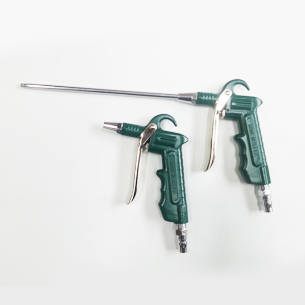
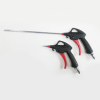
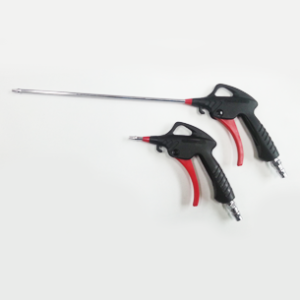
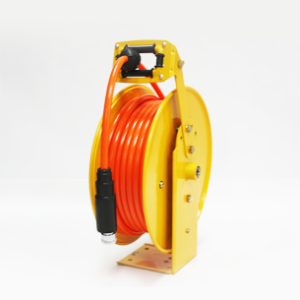
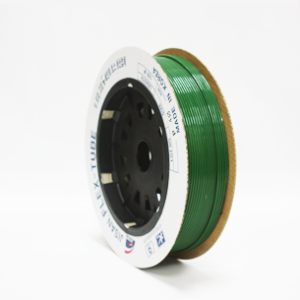
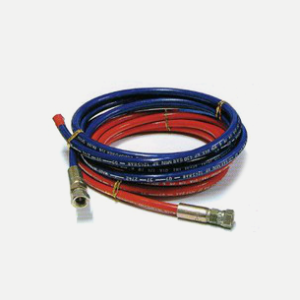
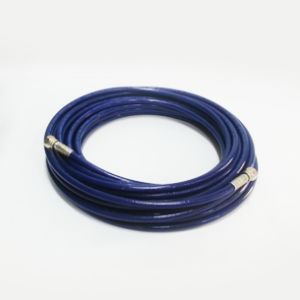
Reviews
There are no reviews yet.